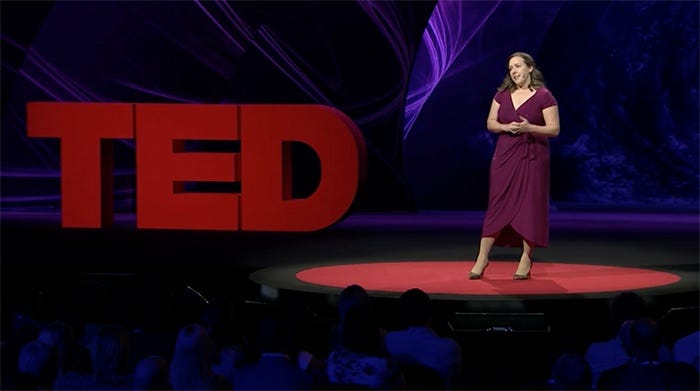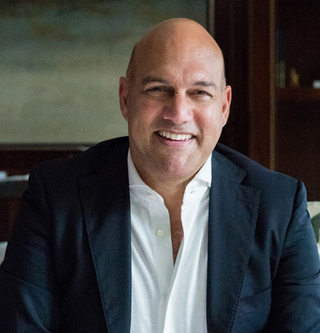
Massive Transformative Purpose — The Heartbeat of Every ExO
An MTP is a new paradigm bigger than just a mission statement. It’s a highly aspirational tagline that tries to solve a global issue.
We have entered a new era in business where an individual can make a massive impact in ways that we never before imagined, let alone achieved.
Google was created by two guys with laptops. Another two guys with laptops created Facebook. It hardly sounds like a formula for business success, yet in less than a decade they transformed how humanity accesses and shares information, and how we connect and socialize.
What was their secret? How did a small group of individuals create the kind of impact previously only achieved by large government organizations or corporate labs armed with thousands of employees and huge amounts of funding?
I wanted to know the answer, so I began studying organizations like Google and Facebook that are creating 10 times more impact than their peers. I called this new breed of organizations exponential organizations, or ExOs for short.
MTP: It’s more than just a mission statement
The founders of Google and Facebook were able to transform the world through their organizations, not because there was anything magical about their laptops, but because they began with a massive transformational purpose (MTP).
An MTP is a new paradigm bigger than just a mission statement. It’s a highly aspirational tagline that tries to solve a global issue. Here are some examples of strong MTPs from ExOs:

These MTPs are more than just inspirational taglines framed up on office walls. They provide an organization with the focus and direction. Below are a few case studies illustrating how MTPs enable ExOs to rapidly scale and massively impact the world.
MTPs provide focus to enable exponential growth
A strong MTP forces your mind to break all the old models about how to achieve a task. It inspires innovation. And it gives you permission to think outside your own constraints and create a new model to support exponential growth.

Take TED as an example. If Chris Anderson had gone the traditional route of presenting to his team a traditional 5-year business plan outlining how TEDx would organize 10,000 events in 5 years, he would have lost the whole team. They would have said it’s insane; it’s impossible. And they probably would have walked out.
However, Anderson took a different route. Driven by their MTP, “Ideas worth spreading,” Anderson wasn’t trying to create a detailed business plan on how to execute and finance 10,000 events. He was simply focused on inspiring and enabling others to share “ideas worth spreading.”
Through this, Anderson ideated a new model where anyone in the world can use TED’s community. He made the TED model available on their website for anyone to access, leverage, and freely organize a TEDx event. Thus, opening the possibilities for exponential growth.

MTPs attract top talent, create communities, and depoliticize organizations

For example, Boston Children’s Hospital’s MTP is “Until every child is well”. This purpose has profound gravity. It truly puts children as the heart and soul of the hospital and attracts those who are highly committed to the cause, from donors to the public to top staff and talent.
MTPs enable agility and an environment of learning
When you have a massive purpose that goes beyond simply making a profit, it turns the organization into a learning environment because everyone is constantly asking, “What can I do to help us achieve that MTP?”
If you take a look at Elon Musk’s initiatives and their MTPs, you’ll see how each one of them aims to massively transform the lives of humanity:

Having attracted the world’s top minds who are excited to be part of these pioneering visions, Musk’s organizations have turned into an environment of rapid learning. This has positioned them at the forefront of research and cutting-edge technology to create a massive impact.
One example of their impact is creating the world’s largest “virtual” power plant in Australia. Elon Musk is now collaborating with the Australian government to equip 50,000 Australian homes with Tesla solar panels and transform them into a massive interconnected “virtual” power plant.
This project, which kicked off in early 2018 and will be rolled out in stages over the next four years, will effectively turn Southern Australian homes into a virtual power facility able to provide as much capacity as a coal power plant. It will cost a tiny fraction of building a conventional power plant while also benefiting Australian homes that will enjoy reduced power bills and a lower carbon footprint.
None of these would have been possible had it not been for Musk’s MTP which encouraged learning, researching, and discovering innovative solutions.
The Key Characteristics of MTPs
Now that you can see the value an MTP will have in your organization, let’s dive into the key characteristics of what an MTP is and is NOT.

3 steps to create an MTP
The first thing to know about finding your MTP is that it will take time. It is a 3-step iterative process that can take a week to nine months depending on the situation.

Step 1: WHY does the organization exist?
The premise for companies launching out of Singularity University (SU) is that the world’s biggest problems are the world’s biggest business opportunities. Thus the first step for the team in this regard is to define the problem space.
In the context of established companies, the problem space will have certain constraints (it would be difficult for Toyota to conceive of solving the world’s hunger). This does not mean, however, that their business cannot be redefined as part of the MTP process.
As Theodore Levitt used to tell his students “People don’t want to buy a quarter-inch drill. They want a quarter-inch hole.” It is critical to begin with the problem the organization is trying to solve. If you are an insurance company your clients don’t want policies, they want security or lower risk.
Step 2: HOW will the organization solve it?
Once the problem has been defined, the group must imagine how the organization will solve the problem and transform the current state of affairs. With a new perspective towards the problem space, it will likely be necessary to readjust how the organization currently serves its clients.
Step 3: What will be the global impact?
Ideally, your solution will be applicable globally even if currently your reach is local or regional. In some industries, however, there may be external factors (such as regulation) that may limit the scope. In any case, the MTP should address the largest possible audience. In the MTP examples we have included, you will note phrases such as “world’s information,” “every child on the planet,” or “world for all” so keeps your global!
Extra tips to create a strong MTP
In general, this process is a series of discovery and development stages through brainstorming workshops, followed by definition and delivery stages to synthesize ideas and create consensus. Once the group is satisfied with the iterative process, it is time to wordsmith the final version of the MTP.
Once worded, how do know your MTP is strong? A good way to test it is with the “MTP Cocktail Party Test.”
Basically, you test out your MTP with real friends or people you meet at networking functions. When someone asks what you do, include the MTP briefly in your answer. If they stick around to ask you more questions about it and learn more, then you have a winner.
To help you create an MTP for your organization, download our MTP tool here.
This article was first published on Jun 11, 2018, on Medium.

Talk to AL-X about your MTP https://openexo.com/chat. This is a great way to learn and grow as an ExO. Also, we did a GPT experiment called the Purpose Genie that is really helpful too - https://chat.openai.com/g/g-cGEZ1Q4DP-purpose-genie
ExO Insight Newsletter
Join the newsletter to receive the latest updates in your inbox.









